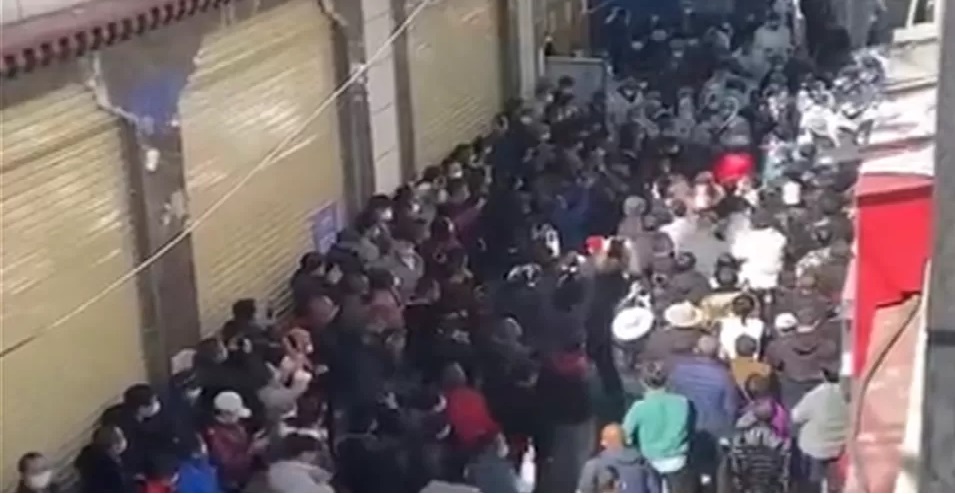
Taipei: Large-scale protests reportedly erupted in Tibet’s regional capital Lhasa against China’s zero-Covid policy. The protests started on Wednesday afternoon and went on till the night with videos showing hundreds of people gathering on the streets, the BBC reported.
The restrictions have meant that migrant Chinese workers, mostly belonging to the ethnic majority Han, have been unable to leave the area. They get permission to reside in Lhasa for daily wage jobs and the workers are now demanding permits to return home. According to the Intelligence sources, the protests by the migrant workers, who have been unable to earn wages due to the strict lockdown, erupted in Chengguan district’s Chakrong area in eastern Lhasa and later spread to Payi area of the city.
Experts on China’s domestic politics have said that the zero-Covid policy in China is the key to Xi Jinping’s legacy as he enters his third term as president. While the rest of the world has largely moved to live with Covid, Xi has insisted on draconian policies aimed at eliminating the virus. According to an AFP report, the approach has crippled growth in the world’s second-largest economy, which was already struggling with a debt-laden property sector and high youth unemployment.
A rare protest in Lhasa against a harsh Covid-19 lockdown. Sources told RFA that Tibetan protesters warned Chinese officials against “setting off a fire” if Covid restrictions are not lifted. pic.twitter.com/oc5DI0Ioje
— Radio Free Asia (@RadioFreeAsia) October 26, 2022
But Xi has dug in his heels, declaring zero-Covid China’s most ‘economic and effective’ path forward, while maintaining policies that have deepened the state’s control over the lives of its 1.4 billion people. In one of the recent shutdowns, some residents in the megacity of Chengdu were not allowed to go outside even when an earthquake shook their apartment buildings. And in the economic hub of Shanghai, a months-long lockdown led to rare scenes of protests from middle-class and wealthy Chinese.
China argues zero-Covid places human life above material concerns and has helped to avert the public health crises seen in other countries. Wednesday’s demonstrations are believed to be the largest since 2008, when large-scale protests against Chinese authorities’ increased repression towards the majority ethnic Tibetan population were violently subdued.

Post Your Comments